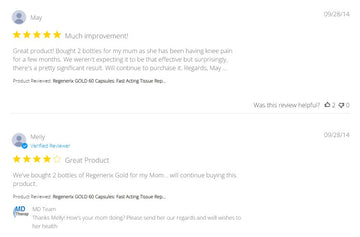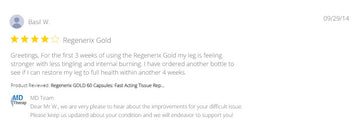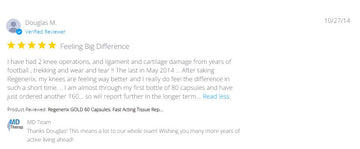Isometric Shoulder External Rotation (Elbow at Side): Quiet Cuff Strength Without the Pinch
by MD therapeutics on Aug 17, 2025
Why isometric external rotation helps (the principles)
-
Loads the cuff without friction. Holding tension without moving engages infraspinatus/teres minor to center the humeral head, reducing painful “pinch” from dynamic rubbing—useful in subacromial pain, tendinopathy, and early adhesive capsulitis.
-
Improves scapulohumeral rhythm. A towel roll between elbow and ribs promotes slight abduction, encouraging lower-trap/serratus co-activation so the ball stays centered in the socket.
-
Builds tolerance safely. Low, sustained effort increases tendon load capacity while keeping joint shear minimal—ideal during flares, post-op transitions (per clinician), and return-to-throw/lift phases.
-
Posture-friendly. Elbow-at-side holds train “everyday” stability for typing, reaching, and carrying.
How to do it (precise, range-aware)
Setup:
-
Stand tall, elbow bent 90°, towel roll between elbow and ribs, forearm across the belly (neutral).
-
Keep shoulder blades soft down/back, neck long.
Options (pick one):
-
Wall press: Stand sideways to a wall. With the back of the wrist at the wall, gently press outward (as if trying to rotate the forearm away), but don’t move.
-
Band hold (anchor in front): Loop a light band at belly-button height. Hold the free end; step out until there’s light tension and hold the outward pull with no actual rotation.
-
Doorframe towel push: Place a folded towel between your wrist and the doorframe; press outward lightly.
Dose & effort:
-
Intensity: ~20–40% effort (light–moderate), pain ≤3/10 during/after.
-
Holds: 5–10 seconds each.
-
Sets/Reps: 2–3 sets × 6–10 holds per side, 1–2×/day during flares; 3×/week for maintenance.
-
Progressions: Longer holds (up to 15 s), slightly heavier band, then transition to slow isotonic rotations and elevation work as symptoms allow.
-
Stop/modify if: Pain spikes, night pain worsens, or symptoms radiate past the elbow.
Limits of exercise alone
-
Systemic drivers (sleep, stress, diet, metabolic health) still shape pain and recovery.
-
Flares cap training load, leading to stop–start progress.
-
Capacity gaps: Isometrics calm things down but don’t rebuild full range, endurance, or overhead control—you’ll still need scapular work and gradual loading.
-
Tendon/capsule changes are slow: Meaningful remodeling typically takes months.
Why add nutritional correction
-
Improve circulation so the cuff and bursa receive oxygen/nutrients post-session.
-
Promote repair by supplying matrix inputs (e.g., collagen peptides, hyaluronic acid) that training “signals” into tendon and capsule.
-
Reduce excessive inflammation to keep daily practice tolerable.
-
Avoid tissue damage by buffering oxidative/catabolic stress from repeated loading.
Botanicals & nutrients often paired with shoulder-friendly rehab
(Blends traditional lore with published research; evidence ranges from promising to mixed. Check interactions and personal suitability with your clinician.)
-
Ginger (Zingiber officinale): Ayurveda/East Asian traditions for circulation and “wind-damp” aches; standardized extracts show modest symptom support for some with osteoarthritis.
-
Turmeric / Curcumin (Curcuma longa): Core Ayurvedic spice; bioavailability-enhanced curcumin has reduced arthritis pain and improved function in multiple trials; culinary turmeric alone is low in curcumin.
-
Boswellia / Frankincense (Boswellia serrata): Ayurveda’s shallaki; standardized extracts associated with improved pain/function in OA cohorts.
-
Winter Cherry / Ashwagandha (Withania somnifera): Adaptogen for resilience; trials suggest immunomodulatory effects and symptom support that may aid training tolerance.
-
Collagen Peptides (Type II focus): Provide peptides that may support cartilage/connective-tissue metabolism—useful alongside controlled isometric loading.
-
Hyaluronic Acid (oral): Contributes to lubrication/viscosity; used to support smooth, comfortable shoulder motion.
-
Cat’s Claw (Uncaria spp.): Amazonian tradition for “rheumatism”; small trials show short-term pain improvements, though evidence remains limited.
The practicality problem
-
Food-only dosing is hard: Daily, research-like intakes of curcumin/ginger via meals are impractical.
-
Pill burden & cost add up: Buying six–seven separate products (ginger, turmeric, boswellia, ashwagandha, collagen, HA, cat’s claw) means many capsules and a higher monthly spend—vs. one comprehensive formula.
A convenient all-in-one option: Regenerix Gold™
Prefer isometric ER + nutrition without juggling bottles?
-
What’s inside: Hydrolyzed Type II Collagen, Hyaluronic Acid, and a proprietary blend of Ginger, Turmeric, Frankincense (Boswellia), Cat’s Claw, and Winter Cherry (Ashwagandha)—the same seven ingredients discussed above—combined to promote healthy joint and muscle function and support everyday recovery.
-
Need only: 2–3 capsules daily.
-
Price: $98 a bottle.
-
Why it fits here: One formula covering seven evidence-linked ingredients is simpler—and typically more cost-effective—than buying 5–7 separate supplements.
-
Track record: Recommended by doctors and physical therapists internationally for about a decade (individual clinician views vary).
Supplements support healthy function; they don’t diagnose, treat, or cure disease. Check interactions (e.g., anticoagulants with turmeric/ginger/boswellia) and suitability with your clinician.
This week’s shoulder mini-plan
-
Daily (or flare phase): Isometric external rotation 2–3 sets × 6–10 holds (5–10 s), pain ≤3/10.
-
3×/wk add-ons:
-
Isometric shoulder abduction (ball between elbow and wall) 2×10 holds,
-
Scapular retractions (band) 2–3×12–15,
-
Wall slides with gentle upward rotation 2–3×10.
-
-
Progress when calm: Add slow banded external rotations (through a small, pain-free arc) and light “W” scapular pulls.
-
If symptoms spike: Halve hold time/effort; return to pendulums; seek guidance if night pain or weakness persists.



